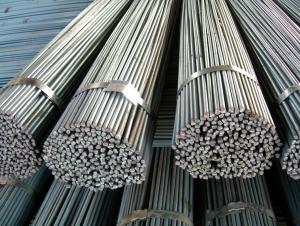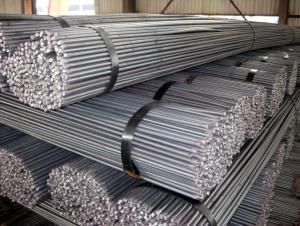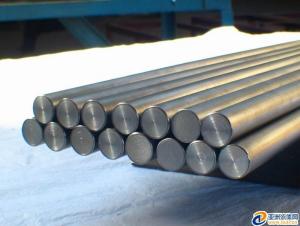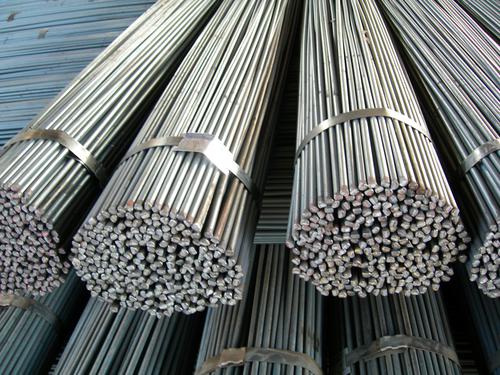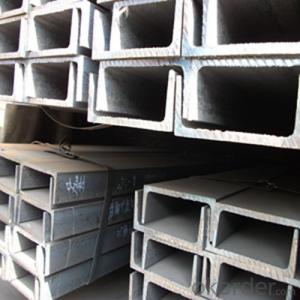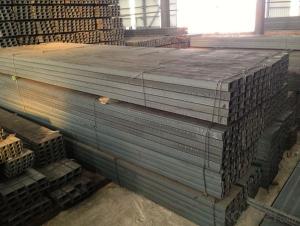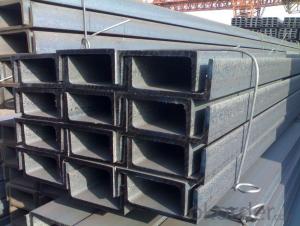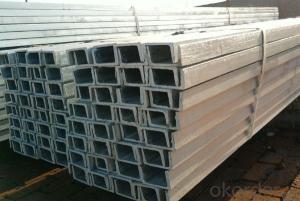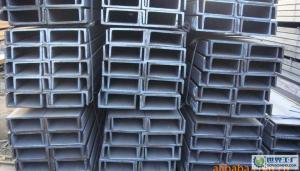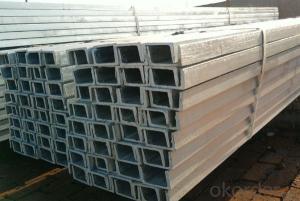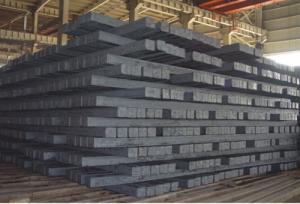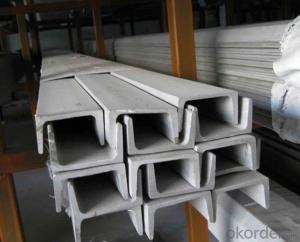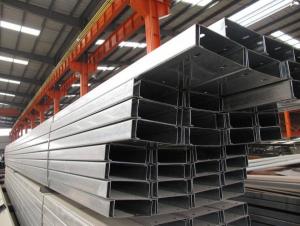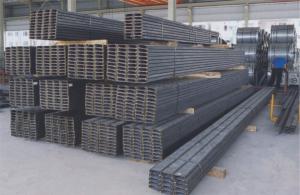GB U CHANNEL 10025 S235JR or JIS U Channel Hot Rolled High Quality
- Loading Port:
- China Main Port
- Payment Terms:
- TT or LC
- Min Order Qty:
- -
- Supply Capability:
- -
OKorder Service Pledge
OKorder Financial Service
You Might Also Like
Product Description:
OKorder is offering high quality GB U CHANNEL 10025 S235JR or JIS U Channel Hot Rolled High Qualityat great prices with worldwide shipping. Our supplier is a world-class manufacturer of steel, with our products utilized the world over. OKorder annually supplies products to European, North American and Asian markets. We provide quotations within 24 hours of receiving an inquiry and guarantee competitive prices.
Product Applications:
1.The JIS U Channel Steel can be devided into two kinds, namely common channel steel and light channel steel. The sizes of hot rolled common channel steel range from 5# to 40#. Meanwhile, the channel steel can be divided into cold forming sectional equal channel steel, cold forming sectional unequal channel steel, cold forming inner edge channel steel and outer edge channel steel.
2.The JIS u channel steel is usually used for arch-itechtural structure, and they could be welded in order to support or hang a vari-ety of facilities. They are also usually used in combination with I beam. The channel steel with sizes under 14# is usually applied to construction engineering, as purline, while the channel steel with sizes above 16# is more likely to be used in building vehicle chassis structure and mechanical structure. Furthermore, the channel steel in sizes above 30# are target at building bridge structure, as tension bar.
3.In a word, the channel steel must possess perfect welding property, riveting property and mechanical property and so on.
Product Advantages:
OKorder's GB U CHANNEL 10025 S235JR or JIS U Channel Hot Rolled High Qualityare durable, strong, and resist corrosion.
Main Product Features:
· Premium quality
· Prompt delivery & seaworthy packing (30 days after receiving deposit)
· Corrosion resistance
· Can be recycled and reused
· Mill test certification
· Professional Service
· Competitive pricing
Product Specifications:
Manufacture: Hot rolled
Grade: Q195 – 235
Certificates: ISO, SGS, BV, CIQ
Length: 6m – 12m, as per customer request
Packaging: Export packing, nude packing, bundled
Original Place | Tangshan, China | Brand Name | UINDA |
Standard | JIS G3192 : 1990 | ||
Material Grade | SS490 | ||
Sizes | 50mm to 200mm | ||
Sales Volume/Year | 3000MT | ||
Destination Area | Middle East, Africa, Southeast Asia | ||
2. The sections in details are as followings in the table-1
JIS U CHANNEL | Standard | Sectional | Dimension |
| Mass: |
| (mm) | (mm) | (mm) | (mm) |
|
50x25 | 50 | 25 | 3.0 | 6.00 | 2.37 |
75X40 | 75 | 40 | 3.8 | 7.00 | 5.30 |
75X40 | 75 | 40 | 4.0 | 7.00 | 5.60 |
75X40 | 75 | 40 | 4.5 | 7.00 | 5.85 |
75X40 | 75 | 40 | 5.0 | 7.00 | 6.92 |
|
|
|
|
|
|
100X50 | 100 | 50 | 3.8 | 6.00 | 7.30 |
100X50 | 100 | 50 | 4.2 | 6.00 | 8.03 |
100X50 | 100 | 50 | 4.5 | 7.50 | 8.97 |
100X50 | 100 | 50 | 5.0 | 7.50 | 9.36 |
|
|
|
|
|
|
125X65 | 125 | 65 | 5.2 | 6.80 | 11.66 |
125X65 | 125 | 65 | 5.3 | 6.80 | 12.17 |
125X65 | 125 | 65 | 5.5 | 8.00 | 12.91 |
125X65 | 125 | 65 | 6.0 | 8.00 | 13.40 |
|
|
|
|
|
|
150x75 | 150 | 75 | 5.5 | 7.30 | 14.66 |
150x75 | 150 | 75 | 5.7 | 10.00 | 16.71 |
150x75 | 150 | 75 | 6.0 | 10.00 | 17.90 |
150x75 | 150 | 75 | 6.5 | 10.00 | 18.60 |
150x75 | 150 | 75 | 6.5 | 10.00 | 24.00 |
|
|
|
|
|
|
200X80 | 200 | 80 | 7.5 | 11.00 | 24.60 |
3. The mechanical property of JIS U Channel Steel in the table-2:
Grade | Yield Strength,N/mm² | Extension Strength N/mm² | |||
Thickness of Steel,mm | |||||
≦16 | >16-≦40 | >40-≦100 | >100 | ||
SS490 | ≧285 | ≧275 | ≧255 | ≧245 | 490-610 |
4. The chemical composition of JIS U Channel Steel as per SS490 in the table-3
Grade | Element(%) | |||
C | Mn | P | S | |
SS490 | - | - | ≦0.050 | ≦0.050 |
FAQ:
Q1 What makes stainless steel stainless?
A1 Stainless steel must contain at least 10.5 % chromium. It is this element that reacts with the oxygen in the air to form a complex chrome-oxide surface layer that is invisible but strong enough to prevent further oxygen from "staining" (rusting) the surface. Higher levels of chromium and the addition of other alloying elements such as nickel and molybdenum enhance this surface layer and improve the corrosion resistance of the stainless material.
Q2 Can stainless steel rust?
A2 Stainless does not "rust" as you think of regular steel rusting with a red oxide on the surface that flakes off. If you see red rust it is probably due to some iron particles that have contaminated the surface of the stainless steel and it is these iron particles that are rusting. Look at the source of the rusting and see if you can remove it from the surface.
Q3: The products are invoicing on theoritical weight or on actual weight?
A3: We can do it in both manners, according to the customers' request.

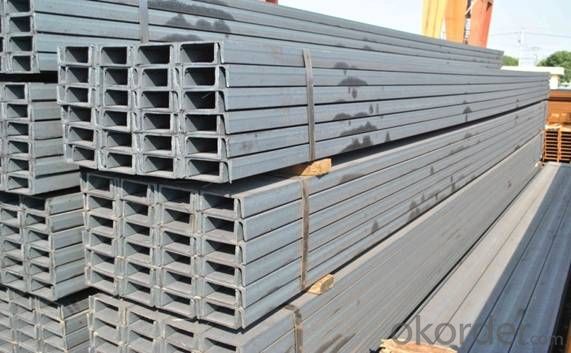
- Q: How do steel channels contribute to energy conservation?
- Steel channels contribute to energy conservation in several ways: 1. Insulation: Steel channels can be used as structural elements in buildings, providing insulation by reducing heat transfer between the interior and exterior. This helps to maintain a comfortable temperature inside the building and reduces the need for excessive heating or cooling, thus saving energy. 2. Durability: Steel channels are highly durable and can withstand various environmental conditions, such as extreme temperatures, humidity, and corrosion. This means that structures built with steel channels have a longer lifespan, reducing the need for frequent repairs or replacements. By avoiding the energy-intensive process of reconstruction, energy is conserved. 3. Energy-efficient manufacturing: Steel channels are often made from recycled steel, which requires less energy compared to producing new steel from scratch. Additionally, steel manufacturing processes have improved over the years, becoming more energy-efficient and reducing the overall carbon footprint. 4. High strength-to-weight ratio: Steel channels have a high strength-to-weight ratio, meaning they can support heavy loads while being relatively lightweight. This allows for the construction of lighter structures, requiring fewer materials and reducing energy consumption during transportation and construction. 5. Versatility and adaptability: Steel channels can be easily modified and repurposed, allowing for the adaptation of existing structures rather than building new ones. This flexibility reduces the energy required for new construction and demolition, as well as the associated waste generation. Overall, steel channels contribute to energy conservation by providing insulation, durability, energy-efficient manufacturing, a high strength-to-weight ratio, and versatility. By incorporating steel channels into various applications, we can reduce energy consumption, minimize waste, and create more sustainable structures.
- Q: Are steel channels suitable for corrosive environments?
- Depending on the specific conditions and the type of steel used, steel channels may be a viable option for corrosive environments. For instance, stainless steel channels possess a high level of resistance to corrosion thanks to their significant chromium content. They can endure exposure to moisture, chemicals, and other corrosive substances without undergoing deterioration. Conversely, carbon steel channels may not be as well-suited for corrosive environments since they are more susceptible to rust and corrosion. In such instances, additional protective measures such as coatings or galvanization might be necessary in order to prevent corrosion. Ultimately, the appropriateness of steel channels for corrosive environments will hinge upon the specific application and the selected type of steel. Therefore, it is crucial to consult experts or engineers to ascertain the optimal material for a given corrosive environment.
- Q: Do steel channels have any specific vibration damping properties?
- Although steel channels possess certain inherent vibration damping properties, their effectiveness may not be on par with materials designed specifically for vibration damping. Due to their solid and rigid structure, steel channels are capable of absorbing and dissipating vibration energy to some extent. This is due to the relatively high density of steel, which enables it to absorb and distribute vibration energy more efficiently than lighter materials. Moreover, the shape and geometry of steel channels also contribute to their vibration damping properties. The design of the channel, including its cross-sectional shape and dimensions, can impact its ability to dampen vibrations. However, it is important to acknowledge that when it comes to vibration damping, steel channels may not be as efficient as materials engineered specifically for this purpose, such as elastomers or composite materials. These materials possess properties that are tailored specifically to dissipate vibrations, offering superior damping characteristics compared to steel channels. Consequently, while steel channels do possess inherent vibration damping properties, they may not be the most optimal choice for applications that require significant vibration damping.
- Q: Q235's steel plate and channel steel were rusted in the rain. The corrosion is not too serious, but it looks obvious. Will this product be rejected? Is there a standard in this respect?Please answer professionals, thank you.
- Steel plate surface defects are allowed to be cleaned and cleaned, but the minimum thickness of the steel plate shall be ensured. Grinding and cleaning should be smooth, without edges and corners. When welding is required, it shall be carried out according to the provisions of GB/T 14977.
- Q: What is the weight per foot of various steel channel sizes?
- The weight per foot of various steel channel sizes can vary depending on the specific dimensions and thickness of the channel. In general, the weight per foot of steel channels can range from around 1.5 pounds per foot to over 20 pounds per foot. It's important to consult a steel channel weight chart or a manufacturer's specifications for precise weight per foot information for different steel channel sizes.
- Q: The base is a fixed support, and the load is evenly distributed at three points, respectively, at 50010001500 points and three points, the base is rigidly fixed, and the top is connected and fixed
- The stability of channel steel can not be checked, and the flexural strength of channel steel is checked only. The following bending moment diagram can be obtained by calculation8 =Mmax/ (gamma Wx) +N/A=1875N - m/ (1.05*39.7cm - <[f]=205N/mm - +0/12.74=45N/mm fand), to meet the requirements.The Mmax in the upper form is derived from the diagram, and is computed by itself as 1875N, m=1875000N, mm;Gamma cross-section plastic development coefficient, 1.05;Wx No. 10 steel section modulus, look-up table, Wx=39.7cm =39.700mm fand fand;N steel axial force, 0;A channel section area, look-up table, A=12.74cm L.
- Q: Can steel channels be used for signage structures?
- Yes, steel channels can be used for signage structures. Steel channels provide excellent strength and durability, making them suitable for supporting signs of various sizes and weights. They are often chosen for their ability to withstand weather conditions, ensuring the longevity of the signage structure. Additionally, steel channels allow for flexibility in design and can be easily customized to meet specific signage requirements.
- Q: What is the difference between U steel and channel steel?
- U steel (full name: hot rolled U steel for mine roadway support)U steel is a steel English like the letter "U" with a cross section, sometimes with a cross section of Japanese letters "better" shape.Main features: large pressure, long support time, easy installation, not easy to deformation and so on.Main uses: mainly used in mine roadway, roadway support, and two times of the tunnel supporting etc..As the main shape steel for the retractable metal support of tunnel, U steel is widely used at home and abroad.
- Q: Can steel channels be used for racking systems?
- Yes, steel channels can be used for racking systems. Steel channels provide a strong and durable solution for storing heavy loads. They are typically designed with a C-shape, allowing for easy installation and providing a sturdy support structure for the racking system. Steel channels can be used in various types of racking systems, such as pallet racks, cantilever racks, and mezzanine racks. They offer excellent load-bearing capabilities and can withstand the weight and pressure exerted by the stored items. Moreover, steel channels are resistant to corrosion, making them suitable for both indoor and outdoor racking systems. Overall, steel channels are a reliable and versatile choice for constructing efficient and safe racking systems.
- Q: What are the safety considerations when working with steel channels?
- When working with steel channels, there are several safety considerations that need to be taken into account. First and foremost, it is important to wear appropriate personal protective equipment (PPE) such as safety glasses, gloves, and steel-toed boots. This will help protect against potential hazards such as sharp edges, flying debris, and falling objects. It is also crucial to inspect the steel channels for any defects or damage before working with them. This includes checking for cracks, bends, or corrosion that could compromise the structural integrity of the channels. If any issues are found, they should be addressed or the channels should be replaced to ensure a safe working environment. When handling steel channels, it is important to use proper lifting techniques and equipment to prevent strain or injury. Steel channels can be heavy and awkward to maneuver, so utilizing lifting aids such as cranes, hoists, or forklifts can greatly reduce the risk of accidents or musculoskeletal injuries. Another safety consideration is to ensure proper storage and stacking of steel channels. They should be stored in a designated area that is clear of obstructions and away from other materials that may pose a risk of falling or causing damage. Stacking should be done in a stable and secure manner, with heavier or larger channels placed at the bottom to prevent toppling. When cutting or welding steel channels, it is important to follow proper safety procedures. This includes using appropriate tools and equipment, ensuring proper ventilation in enclosed spaces to prevent the buildup of toxic fumes or gases, and wearing respiratory protection if necessary. Fire prevention measures, such as having fire extinguishers nearby and keeping flammable materials away from the work area, should also be implemented. Lastly, it is essential to have clear communication and coordination among workers when working with steel channels. This can help prevent accidents, ensure everyone is aware of potential hazards or risks, and enable prompt response in case of emergencies. Overall, by following these safety considerations when working with steel channels, the risk of accidents, injuries, and property damage can be minimized, creating a safer work environment for all involved.
Send your message to us
GB U CHANNEL 10025 S235JR or JIS U Channel Hot Rolled High Quality
- Loading Port:
- China Main Port
- Payment Terms:
- TT or LC
- Min Order Qty:
- -
- Supply Capability:
- -
OKorder Service Pledge
OKorder Financial Service
Similar products
Hot products
Hot Searches
Related keywords
